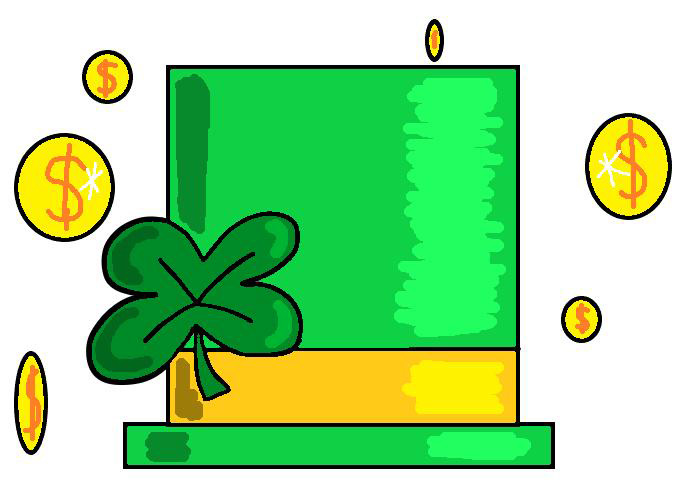St. Patrick’s Day Was Not Always About the Green
March 10, 2023
Shamrocks, green festoons, escape, rebellion, and celebrations of all things Irish permeate the air during Saint Patrick’s Day. Yet the history of the beloved holiday is not as simple and straightforward as it may seem. From the beginnings of the legendary figure to contemporary traditions, the story of the greenest holiday on the calendar is not all rainbows and pots of gold.
The cultural and religious holiday revolves around the patron saint of Ireland, St. Patrick. Legends say he “…was actually born Maewyn Succat,but that he changed his name to Patricius (or Patrick), which derives from the Latin term for ‘father figure’ after he became a priest. The celebration of St. Patrick started in 1631 when the Church established a Feast Day honoring St. Patrick who had died around the fifth century,” according to Time Magazine (time.com).
At first, Patrick did not lead a life of tranquility and predictability. He was born in Roman-controlled Britain in the late fourth century, but at the age of sixteen, he was kidnapped and taken to Ireland as a slave. He managed to escape, but returned to Ireland as a missionary to convert the Irish to Christianity, establishing monasteries, churches, and schools (britannica.com).
Patrick chose to use the shamrock and many other native Irish symbols in order to maintain Irish culture in his teachings of Christianity. According to the History Channel, “Familiar with the Irish language and culture, Patrick chose to incorporate traditional ritual into his lessons of Christianity instead of attempting to eradicate native Irish beliefs. For instance, he used bonfires to celebrate Easter since the Irish were used to honoring their gods with fire. He also superimposed a sun, a powerful Irish symbol, onto the Christian cross to create what is now called a Celtic cross, so that veneration of the symbol would seem more natural to the Irish” (history.com).
Patrick was successful in his role as a missionary, and legends and myths of his existence live on to this day. “Irish culture centered around a rich tradition of oral legend and myth. When this is considered, it is no surprise that the story of Patrick’s life became exaggerated over the centuries — spinning exciting tales to remember history has always been a part of the Irish way of life” (history.com).
The Irish have observed St. Patrick’s Day as a religious holiday for over a thousand years. “On St. Patrick’s Day, which falls during the Christian season of Lent, Irish families would traditionally attend church in the morning and celebrate in the afternoon. Lenten prohibitions against the consumption of meat were waived and people would dance, drink and feast – on the traditional meal of Irish bacon and cabbage” (history.com).
Americans, on the other side of the Atlantic, celebrate Saint Patrick’s Day a little differently. It was emigrants, particularly to the United States, who transformed St. Patrick’s Day into a largely secular holiday that celebrated all aspects of Irish culture. Cities with large Irish populations would hold the biggest celebrations and parades (britannica.com).
One of the most notable traditions of St. Patrick’s Day is donning the color green, yet this was not always the case. It was years after St. Patrick’s time, in 1798, the year of the Irish Rebellion, when green officially became associated with the day. “Up until the rebellion, the color associated with St. Patrick was blue, as it was featured both in the royal court and on ancient Irish flags. But as the British wore red, the Irish chose to wear green, and they sang the song ‘The Wearing of the Green’ during the rebellion, cementing the color’s relevance in Irish history” (time.com).
AP Government Teacher Michele Fournier has a special way of celebrating St. Patrick’s Day. She said, “On the Saturday before St. Patrick’s Day, San Diego has a huge St. Patrick’s Day parade in Balboa Park, and my friends and I go to the park. They have live Irish music and they have Irish dancing. My friends and I all bring food and drinks to share and we stay and watch the bands and the dancers. I actually don’t go out on St. Patrick’s Day because it’s complete craziness.”
From slave, to missionary, to legendary figure, St. Patrick is certainly a notable character in history. Whether the celebrations in his name are meant to be religious or secular, St. Patrick’s Day is a holiday for celebrating all sorts of Irish culture and traditions.


